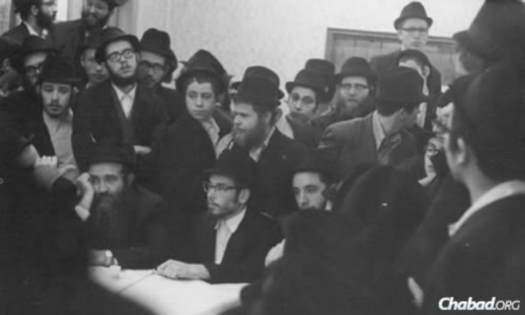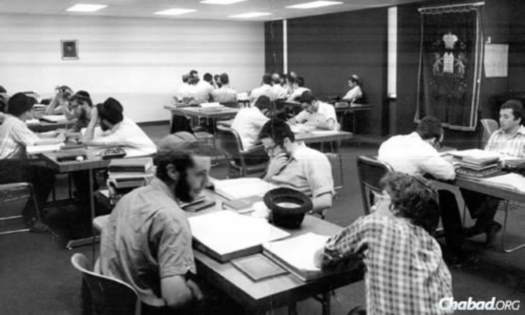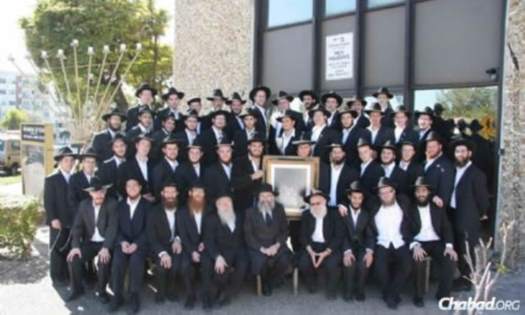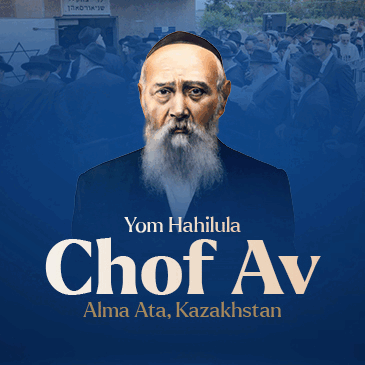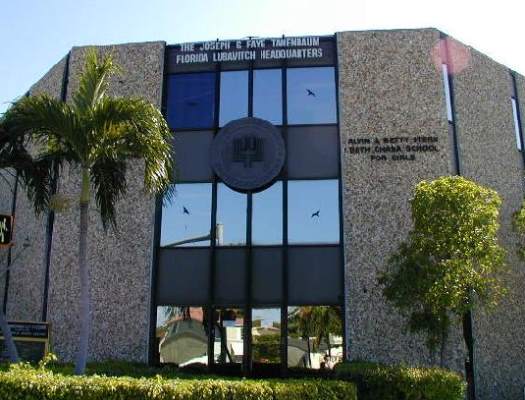
Florida Yeshiva Recalls Roots at It Celebrates 40 Years
Judy and Morty Mayberg fondly remember when 11 yeshivah boys landed in the Fort Lauderdale-Hollywood International Airport in the fall of 1973. They were shluchim, personal emissaries of the Rebbe—Rabbi Menachem M. Schneerson, of righteous memory—and their goal was to found a yeshivah on the balmy beaches of a city better known for relaxation than rigorous study.
“It was as exciting as when the first Sputnik was launched,” recalls Judy, who hosted the students at her home upon their arrival.
Forty years later, the small institution they founded—Yeshivah Gedolah of Greater Miami—has produced hundreds of rabbis and spawned a plethora of Torah institutions throughout South Florida.
“Those first 11 shluchim were just terrific,” says Morty, who had come to Miami in 1959 from Richmond, Va., and had accompanied Rabbi Sholom Ber Lipskar of Bal Harbour in a trip to New York earlier that year to request that the Rebbe send the young men to Miami.
“Their presence meant so much to people. They just woke up our community. In those days, no one imagined how Chabad would grow in South Florida, and so much is because of the seeds that those early students planted.”
The students were accompanied by Rabbi Yehuda Leib Schapiro, his wife Tirtza and their growing family.
“Our first few nights, we spent in a tiny, three-bedroom house,” recalls Avraham Moshe Deitsch, who was one of the founding students, and is now a textile wholesaler in New York. “One bedroom was for the Schapiros, and the other two bedrooms were for us 11 guys. It was cramped, but we set to work learning right away. There was no monkey business. We were yeshivah students, and our mission was to study Torah.”
Site Grows Along With Its Students
A small bungalow served as the yeshivah premises until the large complex on Alton Road in South Miami Beach, which also housed the Landow Yeshivah elementary and high schools, was completed.
The building was dedicated by Mel Landow, a strong supporter of the Lubavitch educational enterprise in Florida, who enjoyed a rich relationship with the Rebbe, with whom he met many times and corresponded often on personal as well as philanthropic and business matters.
Prior to the opening of the new center, the Rebbe wrote Landow that it “should even further ‘encourage the energetic’ to make the utmost effort with the utmost joy and inspiration, for it is truly an everlasting investment bearing everlasting dividends.”
“The atmosphere was amazing,” says Deitsch. “There was a garden in the back of the house, and on Shabbat, there would be all kinds of people coming to study Chassidism and pray at length. At that time, there was no other yeshivah or advanced Torah institution in all of South Florida, so it became a magnet for Torah scholars of all ages.”
A regular visitor was Rabbi Yaakov Kaminetzky, of righteous memory (1891-1986), Rosh Yeshivah of Mesivta Torah Vodaath of Brooklyn, N.Y., who would winter in Miami. While he did not lecture at the yeshivah out of a personal belief that it was not proper for a head of school to teach at a yeshivah that was not his, he did speak at a Kinus Torah (Torah symposium) arranged by the yeshivah.
Another guest was Rabbi Yaakov Yitzchak Ruderman, of righteous memory (1901-1987), founder and Rosh Yeshivah of Yeshiva Ner Israel in Baltimore, who asked what the students were learning and was immediately ready to launch into an in-depth lecture. After the class, he regaled the students with childhood memories of visiting Rabbi Shalom Dov Ber of Lubavitch, of righteous memory, together with his father, recounting the blessing that he received from the Rebbe that he “grow in Torah and fear of Heaven.”
Other distinguished guests included chief rabbis of Israel, the Ribnitzer Rebbe, of righteous memory (1902-1995), and many North American rabbis glad to find an oasis of Torah Judaism in what was then a sea of self-indulgence, as well as young people or even children looking for an authentic Torah experience.
Deitsch also attributes much of the attraction to Schapiro’s pedagogical style. “He is a talented orator who learns and teaches with incredible clarity,” he explains. “The yeshivah developed a name as a place where people could come and grow in their Torah studies.”
Delivering the Joy of Judaism to Others
Soon, more full-time students began trickling in from other states, eager to experience Schapiro’s classes and the homey atmosphere. Within two years, there were 30 additional students, outnumbering the shluchim, who had taken on the role of peer mentors for the others.
The Rebbe referred to the original cohort as his “jewels,” and often expressed his satisfaction with their accomplishments. Yet he also articulated his high expectations, reminding them that there was always more to do.
In addition to their studies, the students would use Friday afternoons and other free time to implement the Rebbe’s 10 mitzvah campaigns. For example, in 1974, the Rebbe encouraged that mezuzahs be affixed on all Jewish doors, and that existing ones be regularly inspected to ascertain their authenticity and any need for repair.
During their lunch hour, the students went door to door, looking for Jewish homes that lacked kosher mezuzahs. With time, they installed 40 mezuzahs and proudly wrote to the Rebbe, informing him of their accomplishments. The Rebbe’s response was forthcoming: “In a city of more than 40,000 Jews?!”
The shluchim would go to nearby North Miami Beach for Shabbat, opening mini-yeshivahs for the weekend. During summer breaks, they fanned out. Some students drove a “mitzvah tank” stocked with Jewish supplies north through the entire state of Florida; others flew south to Venezuela, Panama and Mexico.
“The Rebbe told the shluchim that their purpose is to learn and share the light of Torah with the community,” notes Rabbi Abraham Korf, whom the Rebbe had sent in 1960 to found Lubavitch in Florida, “and they certainly did!”
After three years, the original group returned to New York to be relieved by another set of students. Since then, consecutive groups of shluchim have been forming the core of the Yeshivah Gedolah of Greater Miami for 40 years running. Over the years, the faculty grew and now includes Rabbis Yosef Abrams, Velvel Lipskier, and Bentche Korf.
As a Chabad community developed around the yeshivah, a synagogue was founded and Schapiro was asked to become rabbi. Today, between the community and the school, he lectures publicly for approximately 20 hours a week, including a daily in-depth Talmud class and another shorter class on the Rebbe’s sichahs.
He uses the lectures, he says, as a springboard to discuss other issues that the students—and the laypeople who invariably join—may be encountering, ranging from the veracity of the Torah to hard-to-understand metaphysical concepts in Chassidic literature.
Since he was a member of the team that would edit the Rebbe’s talks for publication, his presentations are often peppered with memories on how a certain clause developed or why the sichah is worded as such—invaluable insights for a student body that almost exclusively comprised of teens born after the Rebbe’s passing in 1994.
Schapiro says he remains remarkably proud of today’s students. “There are so many distractions these days, right in your face—or in your pocket,” he points out. “Yet there are always students who want to learn. It takes much more effort, but the results are just amazing.”

